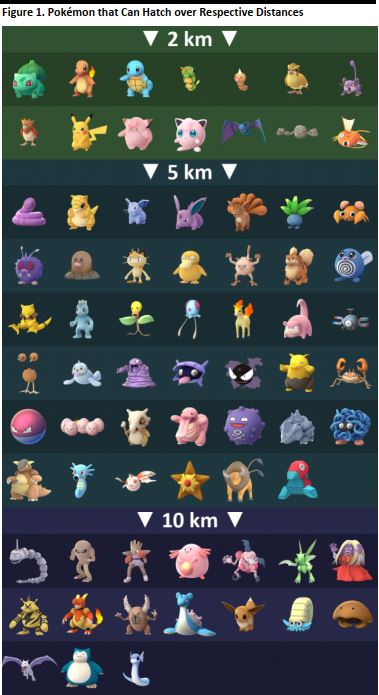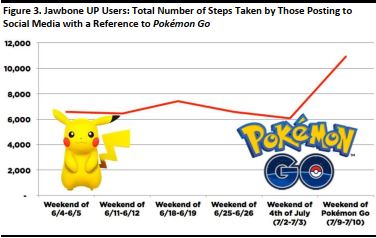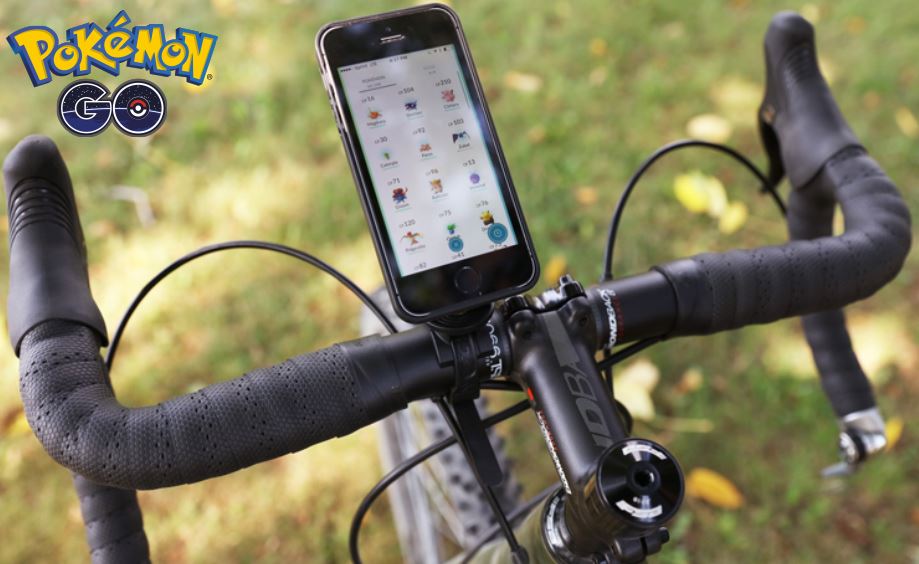SUMMARY
Pokémon Go has experienced phenomenal success since its US launch on July 6. One key difference about this version of the game is that it requires players to leave their residence and travel around their neighborhood and city in search of monsters and eggs, the latter of which hatch into monsters and provide points and other benefits. To hatch the eggs, players must travel 1.2–6.2 miles (2–10 km), depending on the type of egg, which is motivating fitness buffs and could serve to get sedentary kids (and adults) to start exercising.
ABOUT THE GAME
Since its July 6 launch,
Pokémon Go has become a runaway success among kids and adults alike. Apple confirmed to gaming website Polygon.com that the app had set a new record for first-week downloads via its App Store, although it declined to give specific figures. Venture Beat estimates that the game has earned $1.6 million per day since launch, putting total revenue at $35 million to date. According to Needham & Company, Apple could see a total of $3 billion from the game over the next two years.
[caption id="attachment_90464" align="aligncenter" width="409"]
 Source: Miami Herald
Source: Miami Herald[/caption]
GETTING PLAYERS OUT OF THE HOUSE
Whereas traditional video games are typically played sitting down,
Pokémon Go requires players to get up and walk out of the house. The game uses augmented reality superimposed on a smartphone’s camera feed to create images that combine real camera views with computer-generated Pokémon characters. The player walks around the neighborhood to catch monsters (by targeting them with Poké Balls), and to find PokéSpots (where Poké Balls and other items can be obtained), Gyms (where the player gains experience points and items) and eggs, which can hatch into monsters and provide experience points and Stardust (which is used to increase one’s level).
EGGS EQUAL EXERCISE
Eggs can be found randomly at PokéSpots and are given occasionally when the player gains a particular experience level. Eggs come in three varieties, based on the distance the player must travel with the incubator in order for the monster to hatch from the egg: 1.2 miles, 3.1 miles and 6.2 miles (2 km, 5 km and 10 km, respectively). Players receive one incubator at the beginning and gain additional ones as they gain levels. The figure below shows the various monsters that can hatch over respective distances.
[caption id="attachment_90465" align="aligncenter" width="379"]
 Source: Alphr.com
Source: Alphr.com[/caption]
PHENOMENAL RESPONSE
The launch of
Pokémon Go has generated an unmistakable response among fitness enthusiasts. In the graph below, we see a marked increase in exercise activity among users of Cardiogram—an app for the Apple Watch that measures heart rate—starting after the July 6 launch of
Pokémon Go.
[caption id="attachment_90466" align="aligncenter" width="385"]
 Source: Cardiogram
Source: Cardiogram[/caption]
The reaction on social media has been equally explosive. The figure below shows the number of steps taken by Jawbone UP users who posted their steps on social media along with a specific reference to
Pokémon Go.
[caption id="attachment_90467" align="aligncenter" width="376"]
 Source: Jawbone UP
Source: Jawbone UP[/caption]

 Source: Miami Herald[/caption]
Source: Miami Herald[/caption]
 Source: Alphr.com[/caption]
Source: Alphr.com[/caption]
 Source: Cardiogram[/caption]
The reaction on social media has been equally explosive. The figure below shows the number of steps taken by Jawbone UP users who posted their steps on social media along with a specific reference to Pokémon Go.
[caption id="attachment_90467" align="aligncenter" width="376"]
Source: Cardiogram[/caption]
The reaction on social media has been equally explosive. The figure below shows the number of steps taken by Jawbone UP users who posted their steps on social media along with a specific reference to Pokémon Go.
[caption id="attachment_90467" align="aligncenter" width="376"] Source: Jawbone UP[/caption]
Source: Jawbone UP[/caption]